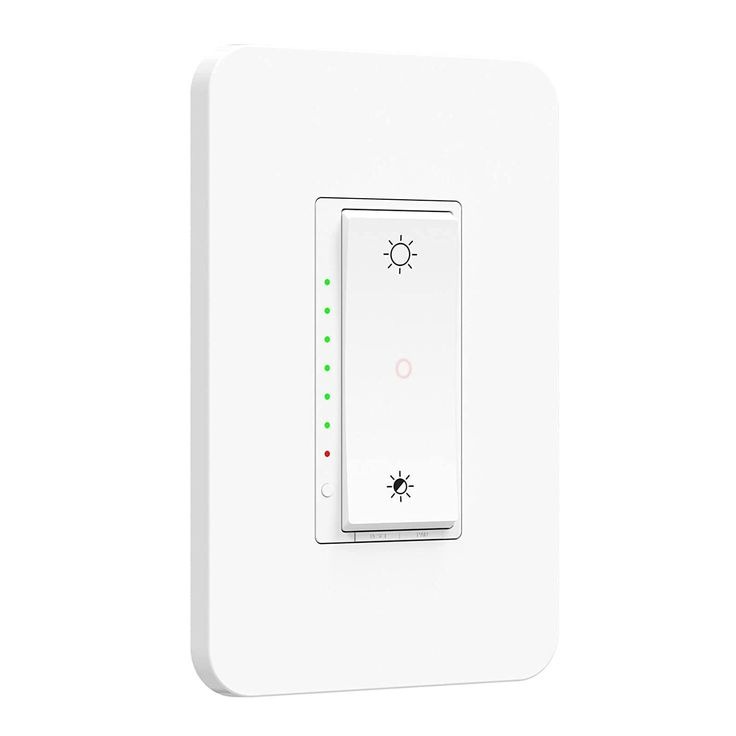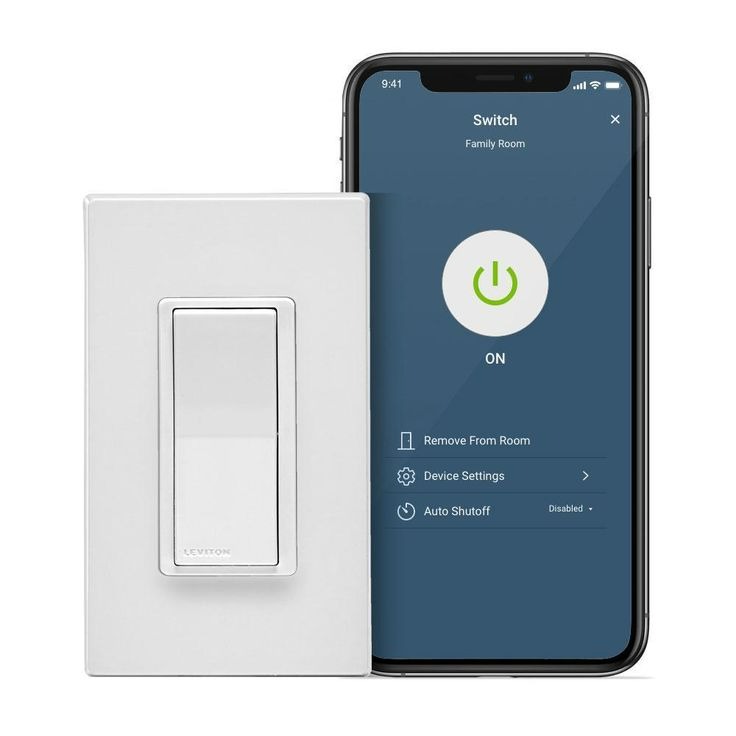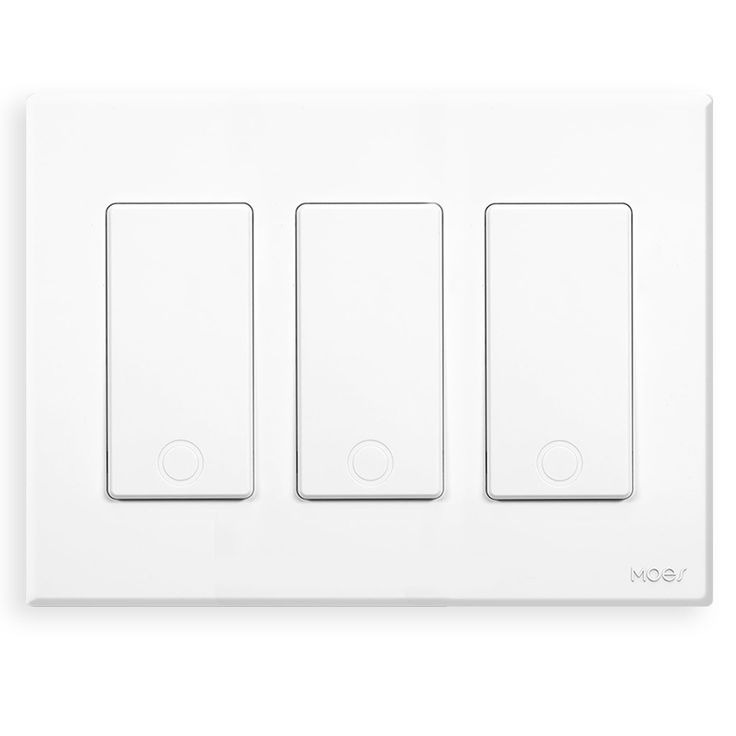What is a Single Pole Smart Switch?
A single pole smart switch is a digital version of the traditional light switch. It controls one circuit from a single location. Unlike a standard switch, a single pole smart switch connects to your home Wi-Fi. This allows remote control through a smartphone or voice assistant. It turns lights on or off without needing to touch the switch.
Key Features
- Remote Access: Control your lights from anywhere using your phone or voice commands.
- Programmable: Set schedules for your lights to turn on or off at specific times.
- Ease of Use: Simple interfaces make using the switch straightforward.
- Enhanced Safety: Reduce the risk of electrical accidents with touchless control.
How It Enhances Your Home
The addition of a single pole smart switch to your home automation brings convenience and efficiency. It integrates with other smart home devices. With it, you can create scenes or activate lighting based on other actions. For example, lights can automatically turn on when you unlock a smart door. A single pole smart switch turns an ordinary home into a smarter, safer, and more energy-efficient space.

Benefits of Installing a Single Pole Smart Switch
Installing a single pole smart switch offers a range of benefits that enhance your day-to-day life. This switch can align seamlessly with your lifestyle, providing both convenience and efficiency. Here are the key advantages:
- Energy Savings: By using schedules, you ensure lights go off when not needed. This can lead to significant energy cost reductions.
- Enhanced Convenience: Adjust lighting from the couch or bed using your phone or smart speaker.
- Improved Security: Program your lights to simulate occupancy when you’re away, deterring potential intruders.
- Smart Home Integration: The switch works with smart home systems for broader automation possibilities.
A single pole smart switch is more than a simple upgrade; it’s a step toward a modern, connected home. In the next segments, we’ll explore how these switches integrate with home automation systems, how to install them, and more. Stay tuned for an in-depth look at making your house a smart home powerhouse.
How Single Pole Smart Switches Work with Home Automation
Single pole smart switches seamlessly integrate with home automation systems. They serve as the basic building blocks for a smart home setup. Here’s how they work with home automation:
- Easy Integration: Single pole smart switches can connect with most home automation hubs. This means they can join other smart devices in your home.
- Automation Scenes: Set up custom scenes where your single pole smart switch acts based on triggers. For instance, lights can turn on when your smart thermostat detects a drop in temperature.
- Voice Control: By integrating with voice assistants like Alexa or Google Home, you can control your lights with simple voice commands.
- Remote Monitoring: Keep track of your home’s lighting via apps on your smartphone, tablet, or computer. This is perfect for when you’re out of the house.
When you make a single pole smart switch part of your home automation, you enhance both functionality and convenience. With automation, your lights not only turn on and off. They can respond to schedules, environmental changes, or other smart devices. It’s easy, secure, and efficient. These switches bring you one step closer to living in a home that truly understands and responds to your needs.

Installation Guide for a Single Pole Smart Switch
Installing a single pole smart switch is an easy way to upgrade your home automation. You don’t need to be an electrician, but you should follow these steps carefully to ensure safety and proper setup. Here’s a simple guide to get you started:
- Turn Off Power: Safety first. Always turn off the power at the circuit breaker or fuse box.
- Remove Old Switch: Take off the faceplate and unscrew the existing switch. Gently pull it out to access wires.
- Identify Wires: You should see three types of wires: live (hot), neutral, and ground. Usually, the live wire is black or red, the neutral is white, and the ground is green or copper.
- Connect the Smart Switch: Attach the live wire to the live terminal, neutral wire to the neutral terminal, and ground wire to the ground terminal on the smart switch.
- Secure the Switch: Carefully push the connected switch back into the wall box. Ensure wires are not pinched. Then, screw the switch in place and attach the faceplate.
- Restore Power: Turn the power back on at the circuit breaker. Check if the LED on the switch lights up.
- Set Up App: Download the smart switch app on your smartphone. Follow app instructions to connect the switch to your Wi-Fi network.
Before you start, read the manufacturer’s guide that comes with your single pole smart switch. Each model may have specific requirements or steps. If you ever feel unsure, it’s best to consult a professional electrician. Once installed, try pairing the switch with other devices and hubs to enjoy the full benefits of home automation.
Compatibility: Devices and Hubs for Single Pole Smart Switches
Finding the right devices and hubs compatible with your single pole smart switch is crucial. Compatibility ensures smooth operation within your smart home system. Here’s what you need to consider for seamless integration:
- Supported Devices: Check that your smart switch is compatible with current home devices. These might include smart bulbs, thermostats, and security systems.
- Hub Requirements: Many smart switches work with popular hubs like Samsung SmartThings, Wink, or Amazon Echo Plus. Verify that your chosen switch can pair with your hub.
- Software Integration: Make sure the smart switch’s app works on your smartphone or tablet. It should sync easily with both iOS and Android devices.
- Voice Assistant Compatibility: Confirm that your switch can respond to voice commands from assistants. Look for support for Alexa, Google Home, or Apple HomeKit.
- Wireless Protocols: Understand which wireless protocols are supported. Common ones are Wi-Fi, Zigbee, and Z-Wave. These affect how devices communicate with each other.
- Firmware Updates: Keep in mind that firmware updates can enhance compatibility. Choose a switch that can receive updates for future proofing your setup.
By ensuring compatibility across devices and hubs, your single pole smart switch can serve as a versatile control point in your smart home. This amplifies convenience and extends the functionality of your automated systems.

Cost-Benefit Analysis of Single Pole Smart Switches
When considering a single pole smart switch, evaluating its cost against benefits is vital. This analysis helps determine if it’s a worthy investment for your smart home. Here are key points to consider:
- Upfront Costs: These switches cost more than traditional ones. Prices vary based on features and brand.
- Installation Expenses: While DIY installation is possible, hiring a professional adds to the cost.
- Energy Efficiency: They can lead to savings. Automated schedules prevent unnecessary lighting, reducing energy bills.
- Longevity: Smart switches often have longer lifespans compared to standard switches.
- Convenience: They can be controlled remotely, which adds value to daily life.
- Property Value: A smart home can increase property value. Future buyers might value automation.
- Maintenance Costs: They are typically low, but factor in potential Wi-Fi issues or device compatibility updates.
By reviewing these points, you can make an informed decision on integrating single pole smart switches into your home. They offer convenience and efficiency, which can outweigh the initial costs over time. Remember the potential energy savings and added security that smart switches provide, as these can be significant advantages. In summary, a single pole smart switch is an investment towards a modern, automated, and efficient home.
Troubleshooting Common Single Pole Smart Switch Issues
Encountering issues with your single pole smart switch can be frustrating. However, most problems are common and can be fixed with simple troubleshooting steps. Below are some typical issues you might face and ways to resolve them:
- Switch Won’t Connect to Wi-Fi: Ensure your router is online and working. Restart both your router and the smart switch. Check the distance between the router and the switch; it might be too far.
- Lights Not Responding: Verify if the smart switch is receiving power. Check your circuit breaker or fuse box. Ensure wires are connected correctly inside the switch.
- App Not Controlling Switch: Update the app to the latest version. Re-sync the switch with the app following the manufacturer’s instructions.
- Voice Commands Not Working: Check if the smart switch is linked correctly to your voice assistant. Re-link your smart switch and voice assistant if necessary.
- Switch Is Unresponsive: Perform a hard reset by turning the switch off at the breaker for about one minute. Then, turn it back on.
- Flickering Lights: This might indicate a wiring issue. Ensure the live, neutral, and ground wires are properly connected. If unsure, consult an electrician.
- Schedules Not Working: Double-check the programmed schedules in the app. Ensure the timezone settings are correct and that there are no conflicting schedules.
- LED Indicator Issues: If the LED indicator isn’t functioning as expected, check the switch settings in the app. Some smart switches allow you to adjust the LED behaviour.
Addressing these common issues often restores your single pole smart switch to its full functionality. Follow the manufacturer’s instructions for specific troubleshooting steps. If problems persist, contact customer support for assistance. With these tips, you’ll likely solve most issues quickly, keeping your smart home running smoothly.
Future Trends in Smart Switch Technology
The world of home automation is constantly evolving, and smart switch technology is no exception. Here are some future trends we can expect in the realm of single pole smart switches:
- Increased Connectivity: Future smart switches will likely offer even more seamless integration with a broader range of devices and home automation systems.
- Advanced Gesture Control: Beyond touch and voice commands, gesture recognition might become common for hands-free switch operation.
- Energy Monitoring: Smart switches may provide detailed energy usage stats, helping to manage and reduce electricity consumption more effectively.
- AI Optimization: Artificial Intelligence could be used to learn user habits and preferences, automating lighting in more intuitive ways.
- Enhanced Security Features: Smart switches might include built-in sensors to detect unusual activity and integrate with home security systems efficiently.
- Sleeker Designs: As smart home devices become more prevalent, the aesthetic design of smart switches is set to become more stylish and minimalist.
- Interoperability Standards: Industry-wide efforts might lead to standardized protocols, making it easier to connect various smart devices without compatibility issues.
- Sustainable Manufacturing: There will be a push towards eco-friendly materials and sustainable practices in producing smart switches.
These trends signal that single pole smart switches will continue to play a significant role in advancing the smart home experience, contributing to homes that are not only smarter but also more energy-efficient and secure. By staying informed about these emerging trends, homeowners can make more strategic decisions when upgrading their home automation systems.